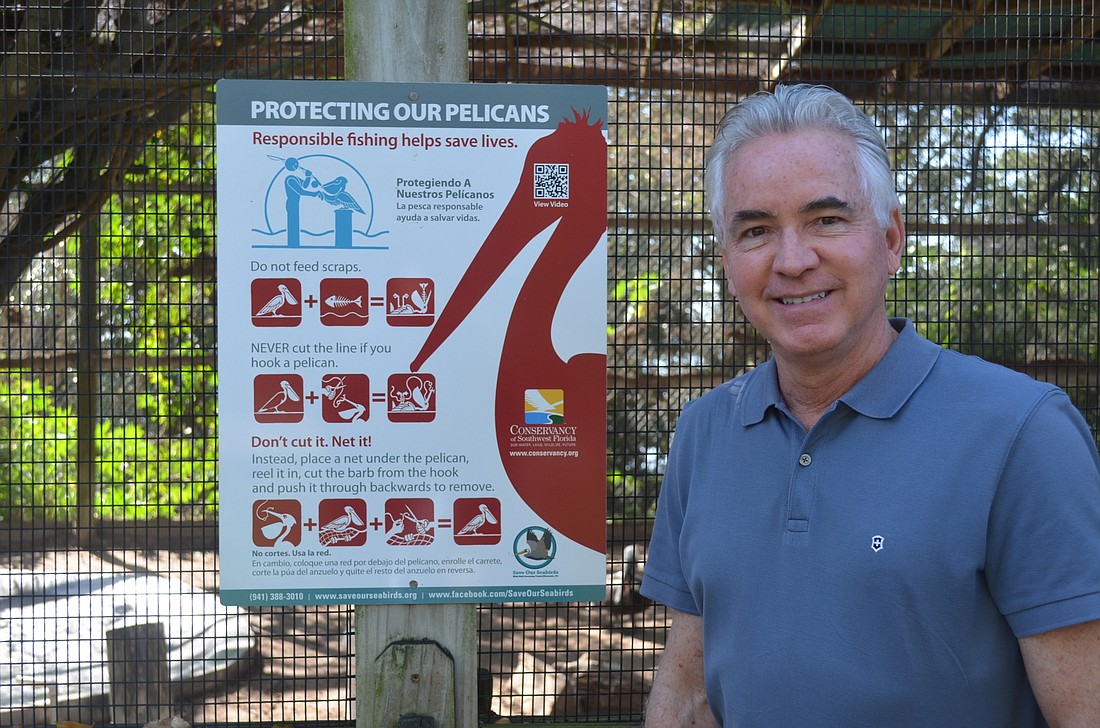- April 19, 2024
-
-
Loading

Loading

Save Our Seabirds might have fewer pelicans to save this summer thanks to new signs that are going up around the Sarasota area.
The metal sign promotes responsible fishing and teaches fishers what to do when they encounter a pelican: Don’t feed it, never cut the fishing line if a pelican is hooked and place a net instead under the pelican to reel it in and correctly remove the hook.
Sarasota resident Jim Lampl, an environmental scientist and SOS supporter, donated funds for the signs.
“I had noticed on different occasions being across bridges and the beaches when wildlife was caught on hooks and entangled that there was no ready signage there informing people what to do,” Lampl said. “Something like this needed to be done. I fully support their mission at Save Our Seabirds, and now a lot of people will know what to do if they see a seabird in distress.”
One hundred of the laminated metal signs were made, and more than 90 have been claimed, including:
“It’s bilingual, but it’s also very symbolic and visual,” SOS CEO David Pilston said. “Even people who can’t read can get the message of these signs.”
The signs will be posted on docks, launches, piers and bait shops.
Pilston said some of the worst injuries he’s seen on pelicans include strangulation by fishing line, a fishing line becoming wrapped around the leg, leading to cut-off circulation and pelicans becoming tangled in mangroves, unable to free themselves.
One of the biggest reasons pelicans become entangled is because they become familiarized to humans feeding them.
“People really need to understand that you don’t want to feed pelicans,” Pilston said. “It’s food they’re not supposed to eat, and they also get accustomed to humans and aren’t afraid to approach them.”
Save Our Seabirds receives approximately 2,500 calls about a bird injury per year — including 200 about pelicans. The organization’s goal is to reach the injured bird within 10 minutes and to remedy the situation on the field. If the injury is more severe, the birds are taken to the hospital for rehabilitation.
“Pelicans getting hooked is a huge problem,” Pilston said. “It’s probably the biggest problem we see at Save Our Seabirds, so hopefully this sign can reduce that. That’s the main goal, to reduce these injuries we see too often.”